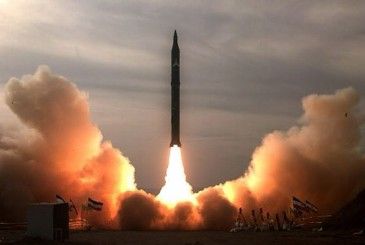Ri Yong Ho tells the UN general assembly that Donald Trump was on a ‘suicide mission’ as tensions between the nations escalate further
Reuters
24 September, 2017
North Korea has said that firing its rockets at the US mainland was “inevitable” after Donald Trump called Pyongyang’s leader “rocket man”, in a further escalation of rhetoric between the two leaders.
North Korean foreign minister Ri Yong Ho’s remarks before the United Nations general assembly came hours after US Air Force B-1B Lancer bombers escorted by fighter jets flew in international airspace over waters east of North Korea, in a show of force the Pentagon said demonstrated the range of military options available to the US president.
“Through such a prolonged and arduous struggle, now we are finally only a few steps away from the final gate of completion of the state nuclear force,” Ri told the annual gathering of world leaders.
“It is only a forlorn hope to consider any chance that the DPRK (Democratic People’s Republic of Korea) would be shaken an inch or change its stance due to the harsher sanctions by the hostile forces,” he said.
Hours later Trump tweeted a warning to North Korea.
Trump announced new US sanctions on Thursday that he said allow targeting of companies and institutions that finance and facilitate trade with North Korea. Earlier this month the UN security council unanimously adopted its ninth round of sanctions on Pyongyang to counter its nuclear and ballistic missiles programs.
Ri, who said Pyongyang’s ultimate goal was to establish a “balance of power with the US”, retorted that Trump himself was on a “suicide mission” after the US president said Kim was on such a mission.
The US bombers’ flight was the farthest north of the demilitarised zone separating North and South Korea that any US fighter jet or bomber has flown in the 21st century, the Pentagon said.
“This mission is a demonstration of US resolve and a clear message that the President has many military options to defeat any threat,” said Pentagon spokeswoman Dana White, calling North Korea’s weapons program “a grave threat”.
“We are prepared to use the full range of military capabilities to defend the US homeland and our allies”.
Ri warned Pyongyang was ready to defend itself if the US showed any sign of conducting a “decapitating operation on our headquarters or military attack against our country”.
North Korea has launched dozens of missiles this year, several flying over Japan, as it accelerates its program aimed at enabling it to target the United States with a nuclear-tipped missile.
The flight follows a week of heightened rhetoric from Washington and Pyongyang, with Trump and Kim Jong Un trading insults. Trump called the North Korean leader a “madman” on Friday, a day after Kim dubbed him a “mentally deranged US dotard”.
Pyongyang conducted its sixth and largest nuclear test on 3 September and has launched dozens of missiles this year as it accelerates a program aimed at enabling it to target the United States with a nuclear-tipped missile. The North has threatened to test a hydrogen bomb over the Pacific.
The Pentagon said the B-1B Lancer bombers came from Guam and the US Air Force F-15C Eagle fighter escorts came from Okinawa, Japan. It said the operation showed the seriousness with which it took North Korea’s “reckless behaviour”.
The patrols came after officials and experts said a small earthquake near North Korea’s nuclear test site on Saturday was probably not man-made, easing fears Pyongyang had exploded another nuclear bomb just weeks after its last one.
China’s earthquake administration said the quake was not a nuclear explosion and had the characteristics of a natural tremor.
The CTBTO, or comprehensive test-ban treaty organization, which monitors nuclear tests, and officials of the South Korean meteorological agency also said they believed it was a natural quake.
An official of South Korea’s meteorological agency said acoustic waves should be detected in the event of a man-made earthquake.
“In this case we saw none. So as of now, we are categorising this as a natural earthquake”.
The earthquake, which South Korea’s Meteorological Agency put at magnitude 3.0, was detected 49 km from Kilju in North Hamgyong Province, where North Korea’s known Punggye-ri nuclear site is located, the official said.
All of North Korea’s six nuclear tests registered as earthquakes of magnitude 4.3 or above. The last test registered as a 6.3 magnitude quake.
Tensions have continued to rise around the Korean Peninsula since Pyongyang carried out its sixth nuclear test, prompting a new round of UN sanctions
 Lebanese Ministry of Information
Lebanese Ministry of Information



